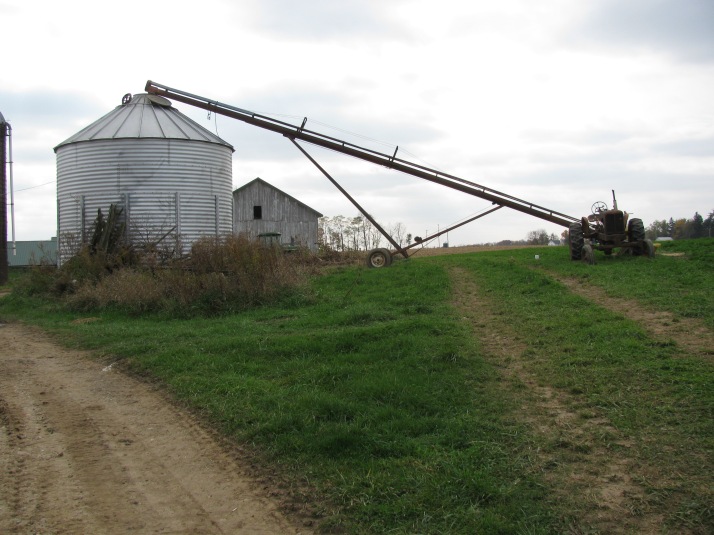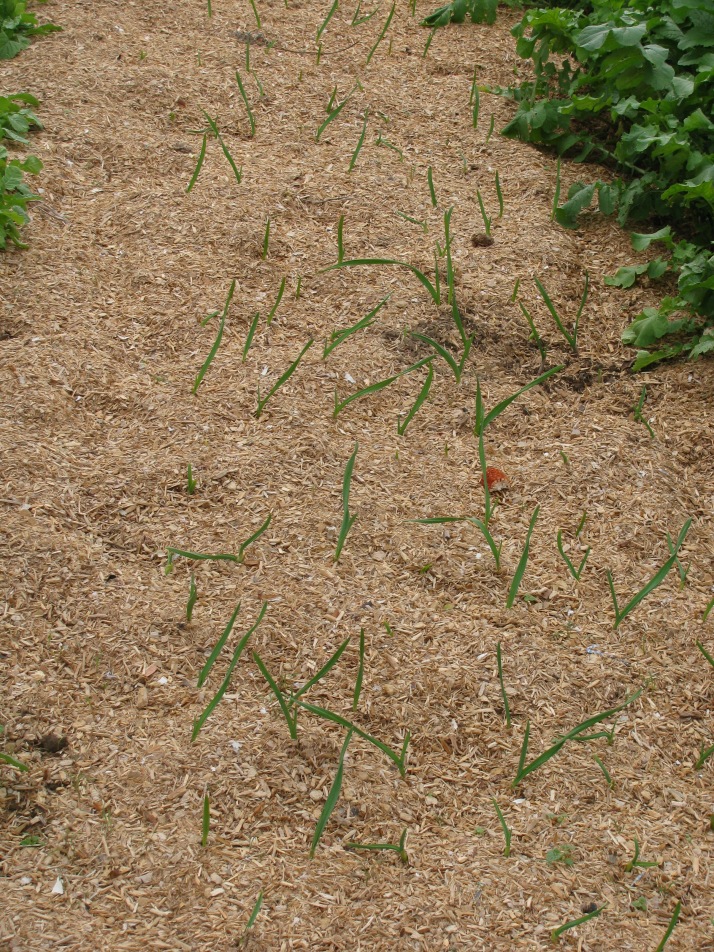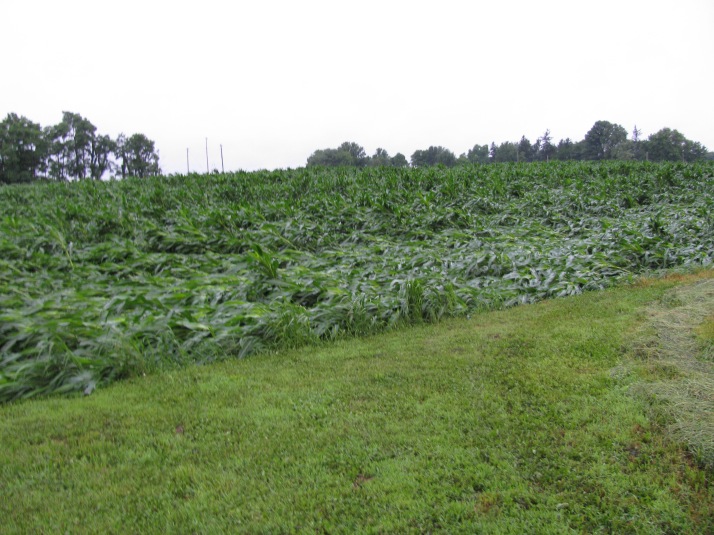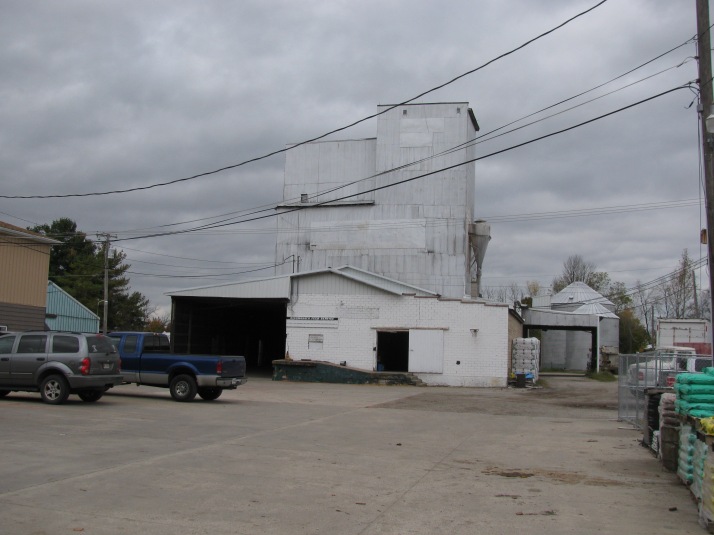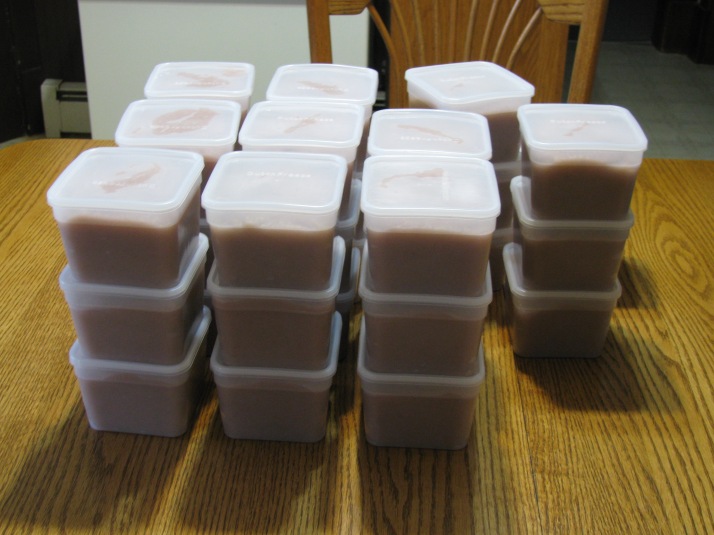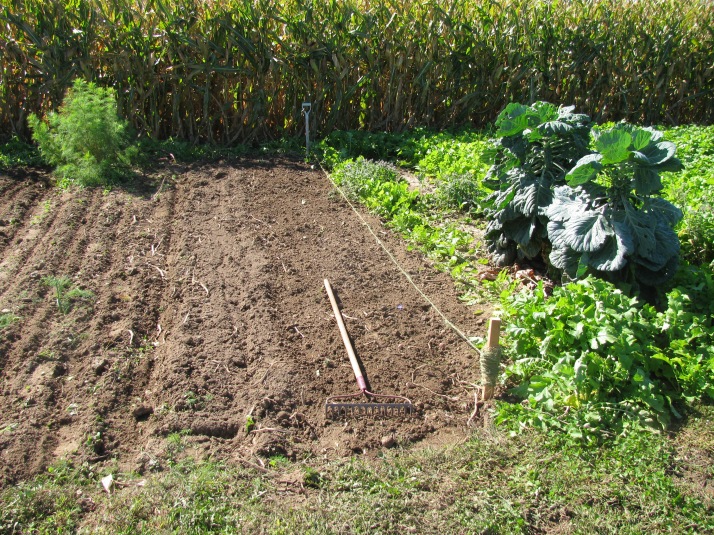 The 2015 growing season is pretty much at an end. On August 29th, the soybeans were still dark green with just a very few leaves starting to turn yellow.
The 2015 growing season is pretty much at an end. On August 29th, the soybeans were still dark green with just a very few leaves starting to turn yellow.
It didn’t even take a month for the beans to dry down. I took this picture on Friday, September 25th. About an hour after the picture was taken, the combine moved into this field and harvested the beans.
 On the following Monday and Tuesday, the Farmer worked the soil and then on Wednesday, September 30th, planted winter wheat. The wheat is up, growing and will be harvested in the summer of 2016.
On the following Monday and Tuesday, the Farmer worked the soil and then on Wednesday, September 30th, planted winter wheat. The wheat is up, growing and will be harvested in the summer of 2016.
 The narrow row, in between the field radishes in the garden, is where the Amaryllis bulbs were growing. I dug them up last Saturday, washed the roots and laid them in my garden wagon to air dry. I pull the wagon outside into the yard during the day; in the evening I put it back into the garage. They look nice and healthy. The leaves will be cut off after they have dried, then the bulbs will be stored in the basement until I’m ready to start potting them in November. I’ll pot a few bulbs every 2 weeks so I have continuous blooms during the dreary days of January, February and into March.
The narrow row, in between the field radishes in the garden, is where the Amaryllis bulbs were growing. I dug them up last Saturday, washed the roots and laid them in my garden wagon to air dry. I pull the wagon outside into the yard during the day; in the evening I put it back into the garage. They look nice and healthy. The leaves will be cut off after they have dried, then the bulbs will be stored in the basement until I’m ready to start potting them in November. I’ll pot a few bulbs every 2 weeks so I have continuous blooms during the dreary days of January, February and into March.
I tilled the soil where the amaryllis were and then planted garlic cloves. They should push through by the end of October; winter over and start growing again as soon as the soil warms up next spring.
So, as my title says, it is the end of the growing season but next year’s growing season has started.





